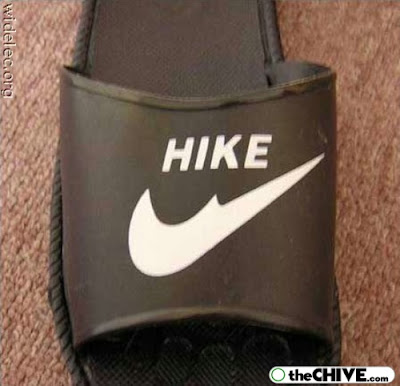Findability and French Search Vendor Names
September 7, 2012
The findability crisis is escalating. There are three reasons. First, companies have ignored the importance of ensuring their company name is findable in the main search indexes. Second, companies have tried to be cute, using odd ball spellings or phrases which are ambiguous. Third, marketers assume that a Web site and some sales people will keep the firm’s identify strong.
I am working of a project which requires me to examine the positioning of several French-owned search, analytics, and content processing companies. I don’t want to isolate any single company, but I want to do a quick run through of what I found when I sat down with a team of researchers who were gathering open source information for me.

Tricky spelling may not help. A happy quack to TheChive.com and http://www.buzzom.com/2010/08/top-5-hilarious-brand-knock-offs-by-china-in-india/
Ami Albert. This is the name I have in my files. The company is now AMI with the tagline “enterprise intelligence software.” A search for AMI on Google for “ami” returned zero links to the company. The older name “Ami Albert” returned a hit to a person named Ami Albert and about six hits down, there was a link to “Ami Software” at the non intuitive url www.amisw.com. The phrase “enterprise intelligence software” returned no hits on the first page of Google results for the “enterprise intelligence software” vendor. Adding “ami” to “enterprise intelligence software” did return links to the company. Conclusion: to find this company in a Web search index one has to know the older name (ami albert) or use the phrase “ami enterprise intelligence software” as a string. Guessing the url is tough because www.amisw.com is short but opaque. No big deal for my researchers. One wonders how many more customers the company could attract if it were more findable.
Antidot. The company uses a variant of “antidote.” If one knows how to spell the name of the company, Google delivers direct links to the company’s home page at www.antidot.net. However, when I ran the query for “antidot” in Yandex, I got the French company and a link to Antidot in Switzerland and www.antidotincl.ch.
Exalead. This is a unique name of a company. The product is called CloudView. A search for Exalead will get the researcher to Exalead’s main site or its search system. However, CloudView does not return a product link to Exalead or its parent Dassault Systèmes. The linkage between the identify of the company and the brand is tenuous. Product name blurring may not be a good thing for some at 3ds.com.
Polyspot. This French vendor dominates the first four hits on Google and maintains this findability across the public Web indexes. The company is also the first four hits on the Chinese government’s Chinese language search engine Jike.com. Another company uses the same name “polyspot.” The search vendor pushes down the plastic dot company, so semantic conflict is resolved in favor of Polyspot. Obviously Polyspot is doing something that the other French vendors are not in terms of brand.
Sinequa. This is a Latin phrase meaning something that is indispensable. There is a drug called “sinequan” which Google displays as an autocomplete option. The French vendor comes up as the top hit in Google. The company uses the phrase “unified information access,” which is also used by Attivio. In this naming example, two vendors roughly in the same business sector are using the identical phrase to describe their business. What is interesting is that Attivio, not Sinequa, has the strongest semantic grip on this phrase.
From my point of view, we have several interesting examples of what to do and what not to do with regard to maintaining control of a brand.
Cute spellings and odd urls make it difficult for a person looking for a company to locate a company. The poor or tenuous linkage between a vendor and a brand also makes more work for the person seeking information. A company with a solid brand identify program is easily found and can erect a fence between itself and any other company which seeks to encroach on semantic territory.
I don’t think that these vendors are unique. Most vendors pay little attention to making their company and products findable. The casual use of tag lines which are identical to another company’s is annoying to a researcher and possibly confusing to a procurement team. For me, I think, “Short cut.”
How can vendors make their company findable? How can a company president ensure that a name is not diluted? What changes are needed in a company’s marketing activities to deal with blurring? Doing more traditional marketing may not deliver the semantic payload required.
Companies, products, and niches are now in the control of Web search vendors. A casual approach may not do what the company needs to get leads, close deals, and generate sufficient revenue to pay for the brutal overhead which many search vendors, regardless of geographic location, must fund.
Effective brand marketing is not an option. It is now essential.
Stephen E Arnold, September 7, 2012
Sponsored by Augmentext


